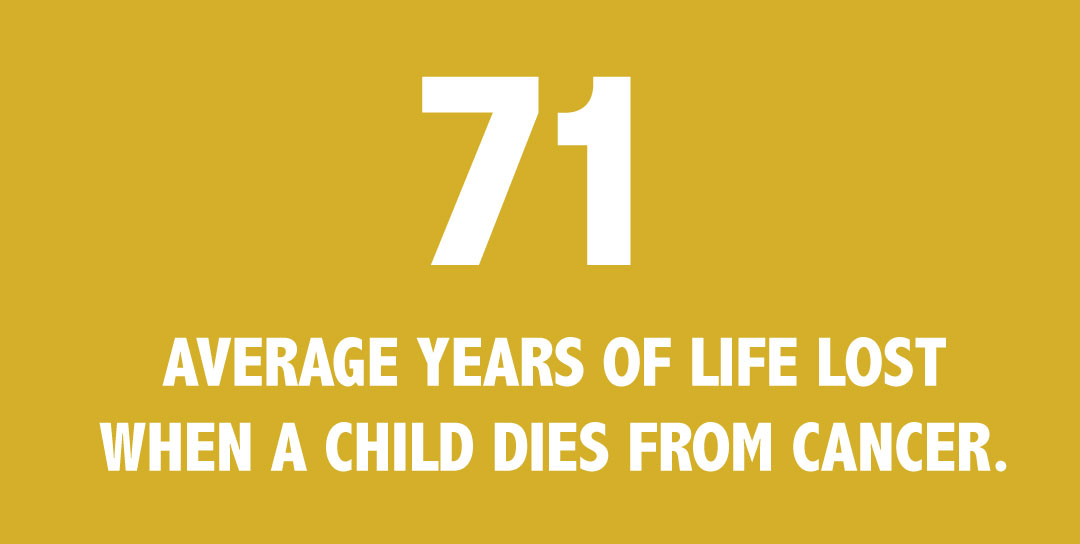
Diffuse Intrinsic Pontine Glioma (DIPG)
(dih-FYOOS in-TRIN-sik PON-teen glee-OH-muh)A Diffuse Intrinsic Pontine Glioma (DIPG) is a tumor located in the pons (middle) of the brain stem. The brain stem is the bottom most portion of the brain, connecting the cerebrum with the spinal cord. The majority of brain stem tumors occur in the pons (middle brain stem), are diffusely infiltrating (they grow amidst the nerves), and therefore are not able to be surgically removed. Glioma is a general name for any tumor that arises from the supportive tissue called glia, which help keep the neurons ("thinking cells") in place and functioning well. The brain stem contains all of the "wires" converging from the brain to the spinal cord as well as important structures involved in eye movements, face and throat muscle control and sensation.
Diagnosis of Diffuse Pontine Gliomas
Diffuse pontine gliomas are located in the brainstem, at the base of the brain. They are usually diagnosed in children aged 5 to 10. They are difficult to treat because the tumor cells grow in between and around normal cells. It is impossible to remove a tumor in this area because it interferes with the functioning of this critical area of the brain.
What causes a diffuse pontine glioma?
We don’t know what causes a diffuse pontine glioma. There is no way to predict that a child will get brain cancer and nobody is to blame if a child develops a tumor. Researchers have been studying whether environmental factors, such as radiation, food, or chemicals can cause brain cancer. At the moment, there is no definite proof that there is a connection.
How many other children have diffuse pontine gliomas?
Diffuse pontine gliomas account for about 5-10 out of every 100 brain tumors in children. What are the medical symptoms of a diffuse pontine glioma? Some symptoms are muscle weakness on one side of the body, swallowing problems, speech problems, crossed eyes, drowsiness, hearing loss, and personality changes. The brainstem has cranial nerves that control many of these functions. The tumors affect these nerves and cause symptoms.
How do you know that a child has a diffuse pontine glioma?
Doctors and other medical professionals will use well-established diagnostic tests to see if a brain tumor is causing your child’s symptoms. These tests will include a physical examination, and brain scans such as magnetic resonance imaging (MRI). The diagnosis is usually made based on the signs and symptoms in your child, and on the results of the MRI study. When the tumor can be identified on the MRI, a biopsy is not necessary.

What is the outcome for a child with a diffuse pontine glioma?
Because they are difficult to treat, the outcome for brainstem gliomas is poor. After diagnosis, the survival time is on average 9 to 12 months. To improve the outcome, doctors have tried giving higher amounts of radiation, or using chemotherapy medicines to kill the tumor cells. Research is underway to achieve better results. When the tumor recurs, the focus of treatment is on managing symptoms to make sure the child is as comfortable as possible.
Treatment of Diffuse Pontine Gliomas
How is a diffuse pontine glioma treated?
These tumors are treated with radiation therapy, which are high-energy X-rays that destroy tumor cells. This treatment can reduce symptoms significantly, but there may be some permanent damage caused by the tumor which can’t be helped. Steroids, another type of drug, are often given to improve some of the symptoms. Surgery is not part of the standard treatment because the tumor has grown within a part of the brain where resection is impossible. The effectiveness of chemotherapy is still uncertain.